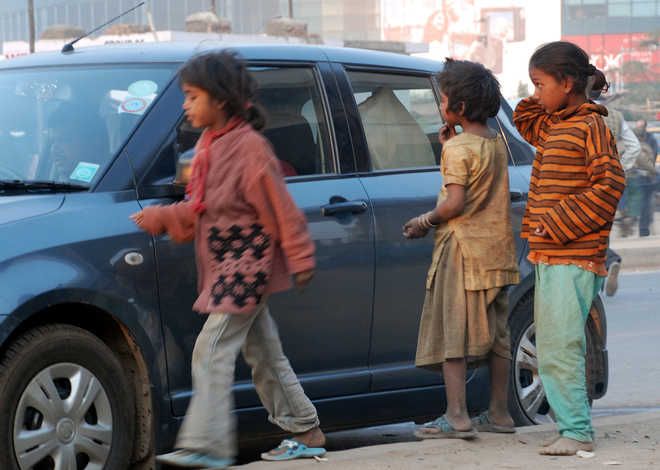Over 10 Lakh Active Drug Users in Kashmir’s Vulnerable Youth Population
By: Javid Amin
Drug addiction, a ubiquitous and alarming problem, is not confined to any particular region and affects diverse populations even in unexpected locations such as Kashmir. The prevalence of substance abuse in this conflict-ridden region is not widely acknowledged, with approximately one million active drug addicts plaguing the land, posing dire consequences for both individuals and society as a whole.
Drug addiction is a significant issue in Kashmir, with an estimated 10 lakh active drug addicts. The region’s proximity to the drug-producing countries of Afghanistan and Pakistan, combined with the availability of cheap narcotics, has resulted in a widespread addiction problem. This issue has significant societal and economic implications, as it affects families, hampers development, and poses a challenge to authorities in providing effective rehabilitation and treatment options.
Issue of drug addiction in Kashmir
The severity of the drug addiction crisis in Kashmir is evident in the alarming statistic that reveals the presence of 10 lakh active drug addicts in the region. This staggering number raises significant concerns regarding the health and well-being of the affected individuals, as well as the overall impact on society. The magnitude of this issue necessitates immediate attention and comprehensive strategies to address the growing drug problem in Kashmir.
Alarming statistic of 10 lakh active drug addicts in the region
The purpose of this essay is to delve into the causes and consequences of the alarming problem of drug addiction in Kashmir, where it is estimated that there are approximately one million active drug addicts. By understanding the root causes of this issue, such as unemployment, conflict, and a lack of awareness and treatment facilities, we can gain insight into the devastating consequences it has on individuals, families, and society as a whole. This exploration will enable us to identify potential solutions and interventions to address this pervasive problem.
Causes and consequences of this problem
The drug crisis in Kashmir is a pressing issue that deserves immediate attention. With a staggering figure of 10 lakh active drug addicts, it is evident that this problem is deeply rooted in the region. The impact of addiction on individuals and families is devastating, leading to a decline in overall well-being and an increase in social and economic challenges. Addressing this crisis requires a comprehensive approach that includes awareness campaigns, rehabilitation programs, and stricter law enforcement.
One of the main causes of drug addiction in Kashmir is the prevailing political unrest and conflict in the region. The constant state of uncertainty and violence has resulted in psychological distress among the population, pushing many individuals towards substance abuse as a coping mechanism. Additionally, the availability and accessibility of drugs in the region has also contributed to the high rates of addiction.
Causes of drug addiction in Kashmir
Socio-economic factors play a significant role in the prevalence of drug addiction in Kashmir. The region’s long-standing political unrest and high levels of unemployment have created an environment conducive to drug abuse. Limited access to education and opportunities for personal and professional growth further exacerbate the problem, as individuals may turn to drugs as a means of escapism from their challenging circumstances.
Socio-economic factors
High unemployment rates have resulted in frustration and hopelessness among the youth in Kashmir, leading to the rise of drug addiction. With over 10 lakh active drug addicts, the region is grappling with the consequences of this social issue. The lack of job opportunities has created a cycle of despair, pushing many individuals towards substance abuse as a means to escape their realities. This alarming trend reflects the urgent need for socio-economic reforms and investment in the region to combat the growing epidemic.
High unemployment rates leading to frustration and hopelessness : Furthermore, poverty and lack of opportunities play a significant role in the proliferation of drug addiction among individuals in Kashmir. With approximately 10 lakh active drug addicts in the region, it is evident that the issue is deeply rooted in socioeconomic factors. The dearth of employment opportunities and low income levels force individuals into a vicious cycle of poverty, leading them towards drug use as a coping mechanism. The lack of access to education and skill development programs further exacerbates the problem, as it limits their chances of attaining better prospects and escape from the cycle of addiction. Thus, addressing poverty and providing ample opportunities for individuals in Kashmir is crucial in curbing the prevalence of drug addiction.
Poverty and lack of opportunities pushing individuals towards drugs : Political unrest and conflict in Kashmir have had a profound impact on the prevalence of drug addiction in the region. The unstable political situation and frequent clashes between government forces and separatist groups have created an environment ripe for substance abuse. Moreover, the lack of adequate governance and limited access to healthcare services further exacerbate the problem. As a result, more than 10 lakh individuals are currently active drug addicts in Kashmir, highlighting the urgent need for comprehensive interventions to address both the political crisis and the escalating drug epidemic.
Political unrest and conflict : The ongoing conflict in Kashmir has had a significant impact on the mental health and substance abuse issues in the region. The constant state of tension and violence has created a sense of fear and trauma, leading to an increase in mental health disorders such as depression, anxiety, and post-traumatic stress disorder. Moreover, the lack of access to proper healthcare and resources exacerbates the problem, as individuals turn to substance abuse as a means to cope with their pain and distress. The prevalence of substance abuse in Kashmir, with approximately 10 lakh active drug addicts, highlights the urgent need for mental health support and intervention in the region.
- The impact of ongoing conflict on mental health and substance abuse – The easy availability of drugs in Kashmir can be attributed to porous borders and a disrupted law enforcement system. With neighboring countries like Afghanistan being major producers of narcotics, the illegal drug trade finds its way into the region through illicit routes. Insufficient border control measures and an ineffective law enforcement mechanism further aggravate the situation, making it easier for drug dealers to operate. This issue demands immediate attention and stringent actions to curb the supply chain and strengthen law enforcement efforts.
- Easy availability of drugs due to porous borders and disrupted law enforcement – Cultural factors play a significant role in the prevalence of drug addiction in Kashmir, as indicated by the staggering number of 10 lakh active drug addicts. Traditionally, the region has a strong reliance on traditional medicine and a history of opium cultivation. Moreover, the lack of recreational activities and limited access to education contribute to a culture that may inadvertently enable drug abuse.
Cultural factors
One major factor contributing to the rise of drug addiction among the youth in Kashmir is the influence of Bollywood and Punjabi music, which often glorify drug culture. These music industries have a significant impact on the mindset of the youth, promoting drug use as a symbol of rebellion, excitement, and popularity. The portrayal of substance abuse in songs and movies sends the wrong message, normalizing drug use and enticing impressionable minds towards experimentation. This influence further validates and strengthens the existing drug culture in the region.
1. Influence of Bollywood and Punjabi music promoting drug culture
Social acceptance and normalization of drug use in certain communities is a concerning issue that exacerbates the drug addiction problem in Kashmir. The lack of adequate awareness and education about the risks and consequences of drug use in these communities perpetuates a culture where drug use is seen as a common and acceptable behavior. This normalization further hinders efforts to combat drug addiction as it creates an environment where individuals are less likely to seek help or support for their addiction.
2. Social acceptance and normalization of drug use in certain communities
According to a recent survey, it is estimated that there are approximately 10 lakh active drug addicts in Kashmir. This alarming statistic raises concerns about the increasing drug abuse problem in the region. Factors such as unemployment, political instability, and easy availability of drugs contribute to this issue. Urgent interventions are needed to tackle this growing crisis and provide rehabilitation and support for the affected individuals.
One of the major consequences of drug addiction in Kashmir is the impact on the overall health and well-being of individuals. The long-term substance abuse leads to a range of physical and mental health problems, including liver damage, respiratory issues, depression, anxiety, and psychosis. Additionally, drug addiction often disrupts social relationships, resulting in isolation and loss of support systems. These consequences collectively pose a significant challenge to the development and progress of Kashmiri society.
Consequences of drug addiction in Kashmir
of drug addiction in Kashmir are severe and far-reaching. The physical toll on individuals can be devastating, leading to organ damage, obesity, and an increased risk of infectious diseases. Mental health is also greatly affected, with a higher prevalence of depression, anxiety disorders, and suicide among addicts. Additionally, the social and economic burden imposed by drug addiction further exacerbates the healthcare system, calling for immediate attention and intervention.
Health implications
Physical health deterioration is a grave consequence of drug abuse that cannot be overlooked, especially in the context of Kashmir, where approximately 10 lakh individuals are active drug addicts. Drug abuse inflicts severe damage on the body, leading to various health problems such as cardiovascular diseases, liver and kidney damage, respiratory issues, and weakened immune systems. These health complications pose significant challenges in the overall well-being of drug addicts, further exacerbating the societal and healthcare burden imposed by drug abuse.
- Physical health deterioration due to drug abuse : Mental health issues, including depression, anxiety, and psychosis, are prevalent among the youth in Kashmir, as highlighted in the essay titled “Not My Kid but Kashmir has 10 lakh active drug addicts.” The stressful socio-political climate combined with the lack of access to quality mental health services exacerbates these problems. Efforts should be made to address these issues through awareness campaigns and improved healthcare infrastructure in order to ensure a better future for the region’s youth.
- Mental health issues such as depression, anxiety, and psychosis : The social and economic impact of drug addiction in Kashmir is deeply concerning. With an estimated 10 lakh active drug addicts in the region, families and communities are being torn apart. The increase in addiction rates has led to an increase in crime, unemployment, and poverty. Moreover, the burden on healthcare and rehabilitation systems is immense, putting a strain on the region’s already fragile economy. Adequate measures need to be taken to address this issue and support those affected.
Social and economic impact
This alarming statistic highlights the breakdown of families and relationships in the Kashmir region. Substance abuse has deeply affected households, tearing apart social bonds and hindering personal development. The absence of a strong support system exacerbates addiction rates, leading to a vicious cycle of destruction. Efforts must be made to address this issue at its core, through rehabilitation programs and initiatives promoting healthy relationships.
- Breakdown of families and relationships : Decreased productivity and economic burden on society are significant consequences of the alarming number of active drug addicts in Kashmir. With an estimated 10 lakh addicts, the region faces a grave problem that not only affects individuals, but also hampers the overall productivity of the society. As addiction takes hold and consumes one’s life, the ability to hold a steady job and contribute to the economy diminishes, further exacerbating the economic burden faced by the society. Additionally, the costs associated with treating and rehabilitating addicts place an additional strain on the economy, which could be better utilized for development and improvement. Consequently, steps must be taken to address this issue comprehensively, focusing not only on rehabilitation, but also on prevention and education to reduce the economic burden and enable individuals to lead more productive lives.
- Decreased productivity and economic burden on society : The rise in crime rates has become a pressing issue for authorities in Kashmir, as the number of active drug addicts reaches a staggering 10 lakh. This alarming statistic highlights the urgency of addressing the underlying causes of addiction and implementing effective measures to combat drug trafficking and usage. Furthermore, the increase in crime can be attributed to the desperation of individuals struggling with drug dependency, who may resort to illegal activities to fund their habits. The government must allocate resources towards rehabilitation programs and law enforcement initiatives to tackle this growing problem and ensure the safety of the community.
Rise in crime rates
Drug-related crimes such as theft and violence present a grave concern in Kashmir, with an estimated 10 lakh active drug addicts in the region. These crimes often occur as a result of individuals seeking funds to support their drug addiction. This alarming statistic emphasizes the pressing need for effective drug prevention and rehabilitation programs in Kashmir.
- Drug-related crimes such as theft and violence : Drug trafficking and organized crime have become deeply rooted issues in Kashmir, with an alarming rise in drug addiction. This illegal trade is not only jeopardizing the lives of the youth but also undermining the overall stability and security of the region. The involvement of various criminal networks, both local and cross-border, has made it a complex challenge for law enforcement agencies to combat this menace effectively. It is crucial to recognize the gravity of the situation and take immediate actions to dismantle these criminal networks, cut off their financial resources, and provide rehabilitation for the victims to ensure a safer and drug-free society.
- Involvement in drug trafficking and organized crime : In recent years, the state of Jammu and Kashmir has witnessed an alarming increase in drug addiction. According to a shocking report titled “Not My Kid but Kashmir has 10 lakh active drug addicts,” it is estimated that there are approximately one million active drug addicts in the region. This staggering number reflects a significant societal problem that requires immediate attention and action. The accessibility and availability of drugs, along with the lack of proper rehabilitation facilities, have contributed to the worsening situation. Furthermore, the widespread conflict and political instability in the region have exacerbated the issue, pushing vulnerable individuals towards substance abuse as a means of escape and coping mechanism. The consequences of this epidemic are far-reaching and devastating, not only affecting individuals and their families but also impacting the overall social fabric of the society. It is crucial for the government and relevant authorities to prioritize and implement effective strategies to tackle this crisis, such as increasing drug education and awareness campaigns, establishing comprehensive rehabilitation centers, and enhancing law enforcement to curb drug trafficking. Only through concerted efforts can the state hope to alleviate the suffering caused by drug addiction and restore a healthier future for its citizens.
Efforts to address the drug addiction problem in Kashmir have gained momentum in recent years. The government has established rehabilitation centers and clinics, offering detoxification and counseling services to drug addicts. Additionally, community-based initiatives have been launched to raise awareness about the perils of drug abuse and provide support to affected individuals and their families. Despite these measures, challenges persist, such as the lack of funding and limited access to treatment facilities in remote areas. Nonetheless, these ongoing efforts signify a crucial step towards combating the drug addiction epidemic in Kashmir.
Efforts to address the drug addiction problem in Kashmir
Furthermore, to address the rampant drug abuse issue, the government has implemented various initiatives. One such initiative is the establishment of rehabilitation centers and treatment facilities across Kashmir. These centers provide counseling, therapy, and medical assistance to drug addicts. Additionally, the government has launched awareness campaigns, educational programs, and anti-drug workshops to educate the youth about the detrimental effects of substance abuse. Through these initiatives, the government aims to combat the growing drug addiction problem and provide a support system for those affected.
- Government initiatives : Rehabilitation centers and treatment programs play a crucial role in addressing the alarming rise of drug addiction in Kashmir. With approximately 10 lakh active drug addicts, these facilities are essential in providing the necessary support and a chance at recovery. By offering a range of therapies and interventions, these programs aim to help individuals overcome addiction and reintegrate into society. Efforts to expand and improve these centers are imperative to combat the devastating consequences of drug addiction in Kashmir.
- Rehabilitation centers and treatment programs : Awareness campaigns and educational programs play a crucial role in addressing the rising drug addiction problem in Kashmir. These initiatives aim to inform the public about the dangers and consequences of drug abuse, as well as the available resources for prevention and treatment. By providing knowledge and promoting healthy choices, these campaigns can empower individuals to make informed decisions and contribute to building a drug-free society in Kashmir.
Awareness campaigns and educational programs : Non-governmental organizations (NGOs) play a crucial role in addressing various societal issues, including drug addiction. In the context of Kashmir, where the number of active drug addicts has reached a staggering 10 lakh, NGOs have stepped in to provide rehabilitation support and raise awareness about the consequences of drug abuse. Through their multifaceted approach, NGOs work towards combating this growing epidemic and strive to create a healthier and drug-free community.
Non-governmental organizations (NGOs) : In order to address the alarming rate of addiction in Kashmir, it is essential to provide efficient support and counseling services to both addicts and their families. These services can play a crucial role in breaking the cycle of addiction and providing a holistic approach towards recovery. By offering guidance, education, and rehabilitation programs, addicts can gain the necessary tools to reintegrate into society, while their families can receive the support needed to cope with the challenges of addiction.
- Providing support and counseling services to addicts and their families : Advocacy for stricter drug control measures and policies is crucial for addressing the issue of drug addiction. With an alarming number of ten lakh active drug addicts in Kashmir, it is high time to implement stronger regulations. This includes increased funding for prevention and treatment programs, harsher penalties for drug suppliers, and better collaboration between law enforcement agencies and healthcare professionals to tackle this pressing public health concern.
- Advocacy for stricter drug control measures and policies : Community involvement plays a vital role in addressing the issue of drug addiction in Kashmir, which currently has 10 lakh active drug addicts. By engaging the community, we can create a supportive and enabling environment for individuals struggling with addiction. It is crucial to raise awareness, provide prevention education, and establish support systems that promote recovery and reintegration. Through collaborative efforts between government agencies, NGOs, parents, educators, and healthcare professionals, we can effectively tackle this pressing problem and help individuals on their path towards a drug-free life.
Community involvement
Grassroots initiatives play a crucial role in raising awareness and preventing drug abuse. By mobilizing local communities and creating targeted programs, these initiatives have the potential to reach a large audience. Through educational campaigns, community outreach, and support networks, grassroots efforts can effectively address the issue of drug abuse and provide resources for intervention and recovery. Such initiatives are vital in combating the rising number of active drug addicts in Kashmir, which currently stands at an alarming 10 lakh.
- Grassroots initiatives to raise awareness and prevent drug abuse : Support groups and peer counseling programs play a crucial role in addressing the rising drug addiction problem in Kashmir. These programs provide a safe space for individuals struggling with drug addiction to share their experiences and seek support from their peers who have undergone similar challenges. Through group therapy sessions and structured counseling, these programs foster a sense of community and provide effective strategies to cope with addiction, promoting long-term recovery and reducing the stigma associated with seeking help.
- Support groups and peer counseling programs : Kashmir’s alarming drug addiction crisis poses a significant challenge for authorities and society as a whole. Reports indicate that there are approximately one million active drug addicts in the region. This comes as a harsh reality check, as the stereotype of a serene paradise clashes with the grim reality of drug abuse. The government needs to take urgent measures to address this predicament and provide comprehensive support for rehabilitation and prevention programs.
In conclusion, the alarming statistic revealing a staggering number of active drug addicts in Kashmir, amounting to 10 lakh, is undeniably distressing. The implications of such a high prevalence of substance abuse demand immediate attention and decisive action from the government and society as a whole to address this pressing issue and extend a helping hand to those struggling with addiction.
Bottom-line: Drug addiction in Kashmir has been a significant issue with far-reaching consequences. The causes of this problem can be attributed to numerous factors such as unemployment, political instability, and easy availability of drugs. The consequences, however, have been devastating, affecting not only individuals but also families and society as a whole. The increasing number of active drug addicts, estimated to be around 10 lakh, has resulted in a rise in crime rates, deterioration of mental and physical health, broken families, and loss of productivity. Urgent measures must be taken to address this crisis and provide support and rehabilitation to those struggling with addiction.
Recap the causes and consequences of drug addiction in Kashmir
Emphasizing the importance of collective efforts is crucial to combat the issue of drug addiction, especially considering the alarming number of 10 lakh active addicts in Kashmir. The magnitude of this problem necessitates a collaborative approach from different stakeholders, including the government, educational institutions, families, and communities. By pooling resources, sharing information, and working together, we can create a comprehensive strategy to address this pressing issue and offer support and rehabilitation to those affected.
Emphasize the importance of collective efforts to combat this issue
In conclusion, it is imperative to emphasize the need for sustained support and investment in prevention, treatment, and rehabilitation programs to address the pressing issue of drug addiction in Kashmir. Urgent action is required to combat the detrimental effects of this epidemic on the youth population. Only through continued dedication and resources can we hope to create a brighter and drug-free future for the region.






